Vasodilators: Calcium Channel Blockers, Nitrodilators & More
Table of Contents
Hypertension
Definition
Hypertension is essentially characterized by the rise of blood pressure readings beyond normal levels on 2 or more separate occasions. The pathogenesis of this disorder can be triggered by a lot of causes; one of which is the alteration in the tone of the smooth muscles and the wall structure surrounding the blood vessels. This can be brought about by factors such as remodelling due to inflammation, inflammation and apoptosis, and impairments in the ionic exchange required for maintaining normal smooth muscle tone.
Classification
There has been a lot of suggested ways to classify this disorder. However, the Joint National Committee on Prevention, Detection, Evaluation and Treatment of Hypertension has published a series of reports that outline all that there is to know about the management of the disease. Their latest report, JNC 8, classifies hypertension according to the degree of blood pressure elevation. In line with this, the management of hypertension is modified according to the classification in which the patients are in.
Blood pressure classification. Table adapted from JAMA 2014;311:507 by James, PA et al
The management of hypertension is very important in the early course of the disease; this is because a lot of fatal complications are actually highly preventable when blood pressure levels are maintained. However, many consequences of hypertension still make their way to being the actual cause of mortality and disability of patients suffering from the disease. Examples of these are those belonging to the acute coronary syndrome.
One classification of the medications listed in the JNC 8 is the vasodilators which has a direct effect in the tone of the smooth muscles surrounding the blood vessels. This results to the reduction of the blood flow resistance in the coronary and peripheral blood vessels, relieving the signs and symptoms of hypertension.
Vasodilators
Calcium Channel Blockers

Image: “L-type Calcium Channel” by Vet vijayraj. License: Public Domain
The idea of the presence of calcium channels in various muscle types has been known since the early days of contemporary medicine. This affirmed the fact that muscle cells do require the influx of calcium in order for them to bring about contraction. After the discovery of calcium channels in cardiac muscle, their presence in different muscle cell types followed, which also led to the development of calcium channel blockers (CCBs).
Moreover, a more in-depth inquiry to the presence of calcium channel in muscle cells has led us to the fact that these are made up of various subunits and are thus classified into groups. An example of which is the L-type calcium channel, which opens up when there is an elevation in the electrical gradient across the cell’s membrane. It is abundant in the smooth muscle cells of blood vessels, and is known to be very reactive to certain drugs. Furthermore, this channel consists of α1, α2, β, γ, and δ subunits.
It is important to note that the type of calcium channels blocked by vasodilators is voltage-gated; this is because calcium channels are also present in other smooth muscles, such as those found in the intestines and in the respiratory tract. However, the ones found on parts, other than the cardiovascular system, are mostly ligand-gated, which means that they respond to chemical triggers instead of changes in the cell’s membrane potential. This type of calcium channel is found to be unresponsive to the effects of CCBs that are marketed to maintain blood pressure levels.
Another point to remember is that CCBs act on the inside of the cell and bind on open L-type calcium channels embedded on the cell membrane. This causes a decrease in the movement of calcium across the membrane, and an eventual relaxation of the muscle tissue. The brain has the same L-type calcium channels found on the nerve cell’s membrane. However, they remain unresponsive to vasodilators because they are normally closed most of the time. This makes CCBs more specific in altering only the tone of cardiovascular smooth muscles.
CCBs are further classified into two:
Dihydropyridines (DHPs) – this type of CCB binds to the larger α1 subunit of calcium channels. They are more potent as peripheral vasodilators. DHPs activate the sympathetic response by causing a decrease in peripheral resistance and subsequent baroreceptor stimulation. This results to the reflex tachycardia that is associated with these drugs. Examples of which are:
- Nifedipine
- Amlodipine
- Felodipine
Non-Dihydropyridines (non-DHPs) – non-DHPs work by binding to similar receptors found on other regions of the α1 subunit. When these drugs are bound to other parts of the subunit, it allosterically affects the binding ability of the DHP receptors. This type of CCBs is known to work on both heart and vascular smooth muscle, causing a negative inotropic effect (decrease in the heart rate) unlike that of DHPs. Since it also readily affects cardiac muscle, it also alters the conduction of impulses along the pacemaker and conduction pathways, making them potent medications for conduction problems. Here are the most common DHPs given to hypertensive patients:
- Diltiazem
- Verapamil
Adverse effects vary depending on the type of CCB given. For instance, constipation, edema and tachycardia are more common among patients taking DHPs, whereas fatigue and unwarranted arrhythmias occur more frequently with those taking non-DHPs. Other minor side effects include:
- Dizziness
- Flushing
- Nausea
CCBs are known to reach toxic levels in the blood when taken with grapefruit. Toxicity is also demonstrated when administered with other anti-hypertensive agents such as β-blockers and ACE-inhibitors.
Summary:
Nitrodilators
Nitrates are actually present in a lot of things, other than medications; a prominent example of which is the nitroglycerine in dynamite. All the drugs classified under the nitrates group appear to work similarly and may cause similar adverse reactions. However, the decision of which agent to use is dictated by the difference in the pharmacokinetics of the members under this class.
When nitrate containing medications enter the blood and passes through the liver, it is metabolized into an inactivated form with the help of organic nitrate reductase. This enzyme cleaves the nitrate groups from the parent drug molecule. Keeping this mechanism in mind, one could deduce that medications that go through the first-pass effect, such as oral nitroglycerin and isosorbide dinitrate, has a low potency, whereas, sublingual forms of the same medications reach therapeutic levels in the blood quickly.
Although the latter form can help in achieving rapid vasodilating results, patients receiving this type of medication actually face the problem of it being only short acting. This is why other forms of nitrate containing medications are developed. Examples of routes for the administration of long-acting forms of nitrates include:
- Buccal
- Transdermal
- Oral (contain a certain amount of active nitrate groups enough to maintain sustained levels in the circulation, e.g. isosorbide mononitrate)
Other forms of nitrates include sodium nitroprusside, a drug which is administered intravenously, and nebivolol, a β-blocker which has nitrous oxide activity.
Nitrate-containing medications are also known to be very volatile. The prototype of this group, nitroglycerin, is stored in dark-colored, air-tight glass containers, to keep their potency. Amyl nitrate is packaged in glass ampules covered with protective cloth and is used as an inhalant after crushing the ampule using your fingers. The liquid inside the ampule will be absorbed by the cloth and vapors are then released ready for inhalation.
Nitrites and nitrates have to undergo a series of biochemical reactions in order for it to become active as vasodilators. First off, the nitrate containing group has to be cleaved from the parent molecule. While some medications, such as nitroprusside, readily release their nitrate group, others require the help of enzymes. Particular examples of which are glutathione S-transferase and aldehyde dehydrogenase. These two are known to be key in the release of nitric oxide from nitroglycerin.
Once the nitric oxide is released, it then binds with guanylyl cyclase and activates it. The activation of this enzyme leads to the formation of cGMP, a second messenger essential to the relaxation of smooth muscle cells.
Since nitrates are potent vasodilators, toxicities that should be anticipated are related to its therapeutic effects. These include:
- Reflex tachycardia
- Orthostatic hypotension
- Headache
Drugs under this classification are also associated with tachyphylaxis or tolerance, especially those having a sustained effect. However, this effect is rare among some of the nitrate containing medications such as Nitroprusside.
The use of nitrates is more prevalent in the management of disorders under the acute coronary syndrome, and in some other cardiac ischemic problems. These medications generally decrease the resistance to blood flow in coronary vessels, thereby maintaining a balance between the supply and demand of oxygen in the cardiac muscle.
Potassium Channel Openers
Cells tend to remain in a hyperpolarized state if there is a greater amount of potassium ions present inside the cells. This state is interrupted once depolarization occurs and potassium is displaced by the influx of sodium within the cell. This leads to the classic activation of cells. In the case of muscle cells, depolarization equates with contraction.
One way to decrease the tone of smooth muscle cells surrounding the blood vessel is to constantly flood the inside of the cell with potassium ions, making it ‘more rested’. This is made possible by keeping potassium channels open with the help of certain medications.

Image: “Minoxidil” by Benjah-bmm27. License:
Minoxidil – this is an efficient vasodilator available in forms taken per orem. Once activated, it releases a potent metabolite, minoxidil sulfate that keeps the cell membrane of smooth muscle cells permeable to potassium ions. Toxicities are related to the therapeutic effects and include reflex tachycardia, chest pain, palpitations and edema. In order to address these side effects, it is taken with β-blockers and diuretics. Other side effects include headache, sweating and excessive hair growth.
Nicorandil – this drug also contains a vasodilating effect with a mechanism similar to that of nitrodilators. It is a nicotinamide nitrate ester that has potent effects in coronary arteries and is known to reduce both preload and afterload. It activates KATP channels, keeping the cell hyperpolarized.
Diazoxide – aside from activating potassium channels, it also inactivates L-type voltage gated calcium channels resulting to the inhibition of contraction. Since it also acts on potassium channels on tissues other than those of the smooth muscles, it also results to the inhibition of insulin release in the pancreas, leading to an increase in the glucose levels in the circulation.
Dopamine (D1) Receptor Agonists
The only known D1 receptor agonist available to control hypertension is Fenoldopam. This drug works by activating D1 receptors in the peripheral arteries. This results to a rapid vasodilating effect. It also acts on the same receptors found in kidneys, decreasing the blood volume by way of sodium and water excretion in the urinary system. It is administered intravenously and is associated with side effects including tachycardia, headache and flushing. This medication would not be given to patients suffering from increased intra-ocular pressure such as in glaucoma.
Review Question
The correct answer can be found below the references.
Which, among these medications, is contraindicated for patients suffering from 3rd degree AV-block?
- Amlodipine
- Diltiazem
- Nifedipine
- Felodipine
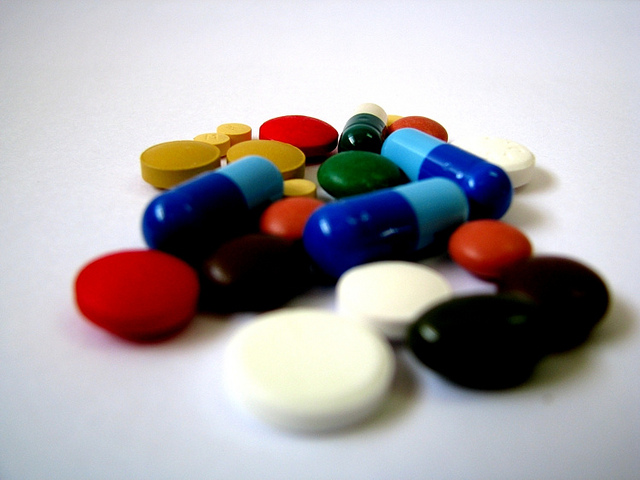
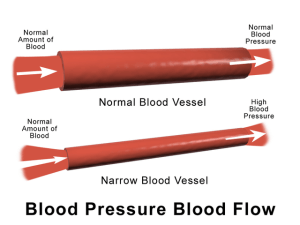
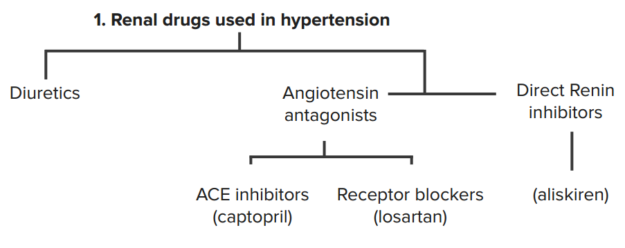
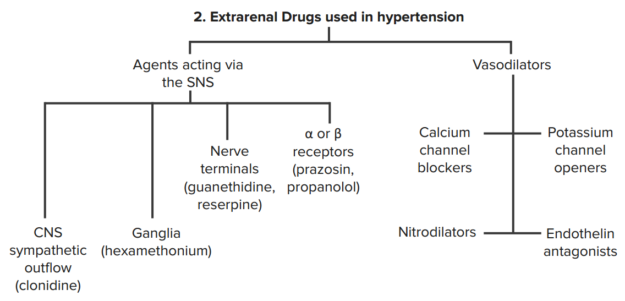
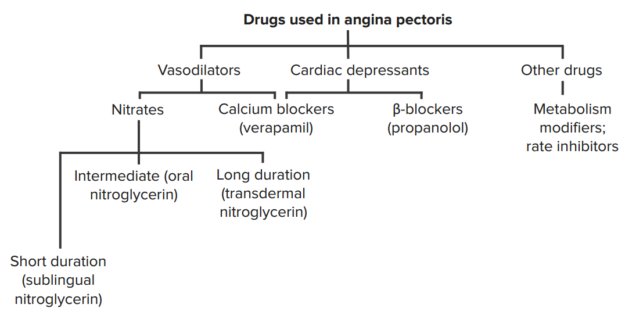
Comentários
Enviar um comentário